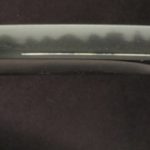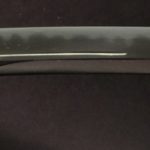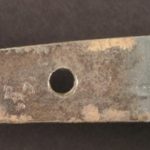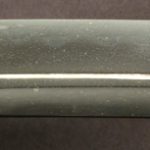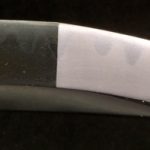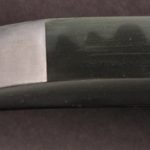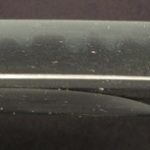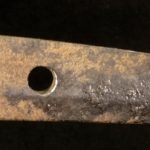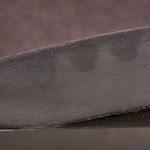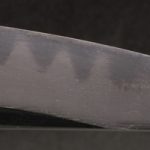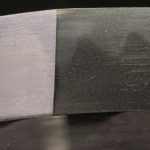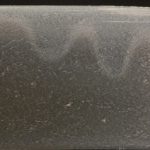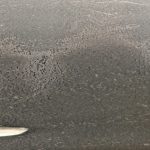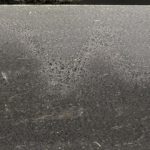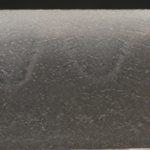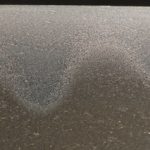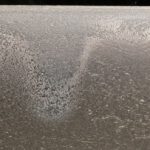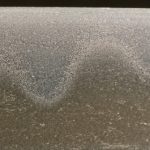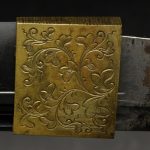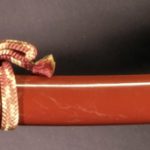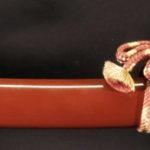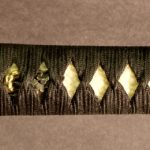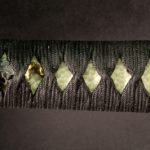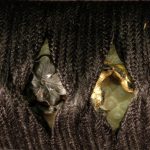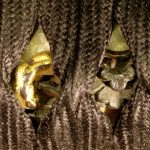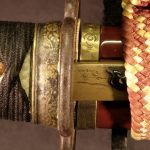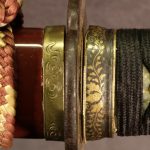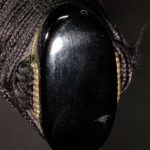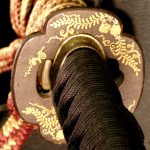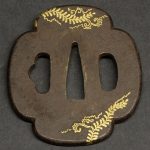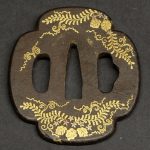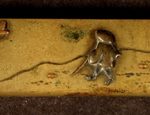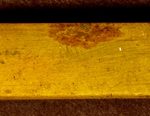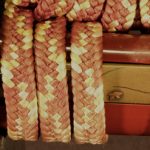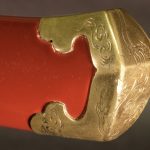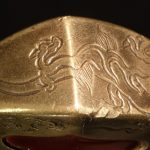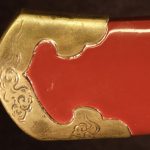WAKIZASHI / MUMEI / KOSHIRAE / $3000
WAKIZASHI, UNOKUBI-ZUKURI, MUMEI
MEI: NONE
DATE: NONE
NAGASA: 40.957cm (16.125″)
OVERALL: 53.97cm (21.25″)
MIHABA: 2.857cm (1.125″)
KASANE: 0.63cm (0.25″)
SORI: 1.5875cm (0.625″)
NAKAGO: UBU
MEKUGI ANA: ONE
YASURIME: KESHO
MUNE: IORI
HADA: KO-ITAME
HAMON: GUNOME CHOJI
BOSHI: KO-MARU
HORIMONO OMOTE: NAGINATA HI
HORIMONO URA: NAGINATA HI
HABAKI: 1 PIECE GOLD FOIL WITH CARVED VINES
KOSHIRAE
Beautiful, mounted Unokubi-zukuri wakizashi with O-Kissaki. Nakago is ubu with one mekugi ana. Hada is Itame with chikei and the hamon is Gunome Choji in nie-deki. The naginata-hi gives this sword a feeling of being naginata naoshi, but the turnback in the boshi is not generally seen on naginata naoshi. There is much hataraki or activity to see in this blade such as chikei, ji-nie, nioi, etc. There are a few tiny cosmetic issues like hike-kizu or surface scratches, a few small areas of loose hada, light staining. Nothing worth mentioning, but I attempt to be completely transparent.
The Koshirae is what is known as a Denchu-zashi or sometimes called Banzashi or Kashimono koshirae. The only difference being that on some (not all) denchu-zashi koshirae the space between the kaerizuno and the kurigata was obviously larger than the other two styles. The Denchu zashi koshirae is distinguishable by the wide kogiri.
This style became fashionable with Daimyo, who had their wakizashi mounted in this manner for their attendance within the inner sections of the castle where only short swords were allowed.
The menuki are a floral motif. Kashira is horn, the fuchi and tsuba are Higo and are a floral pattern done in Higo-zogan. All of the saya fittings are matching and intact. They are gold washed with a motif of swirling clouds and a dragon on the sazajiri. The saya is red lacquer and is in excellent condition. The habaki is very nice and is carved in a floral karakusa or arabesque pattern.
Price: $3999 plus S/H
Reduced Price: $3499 plus S/H
Reduced Price: $3000 plus S/H
